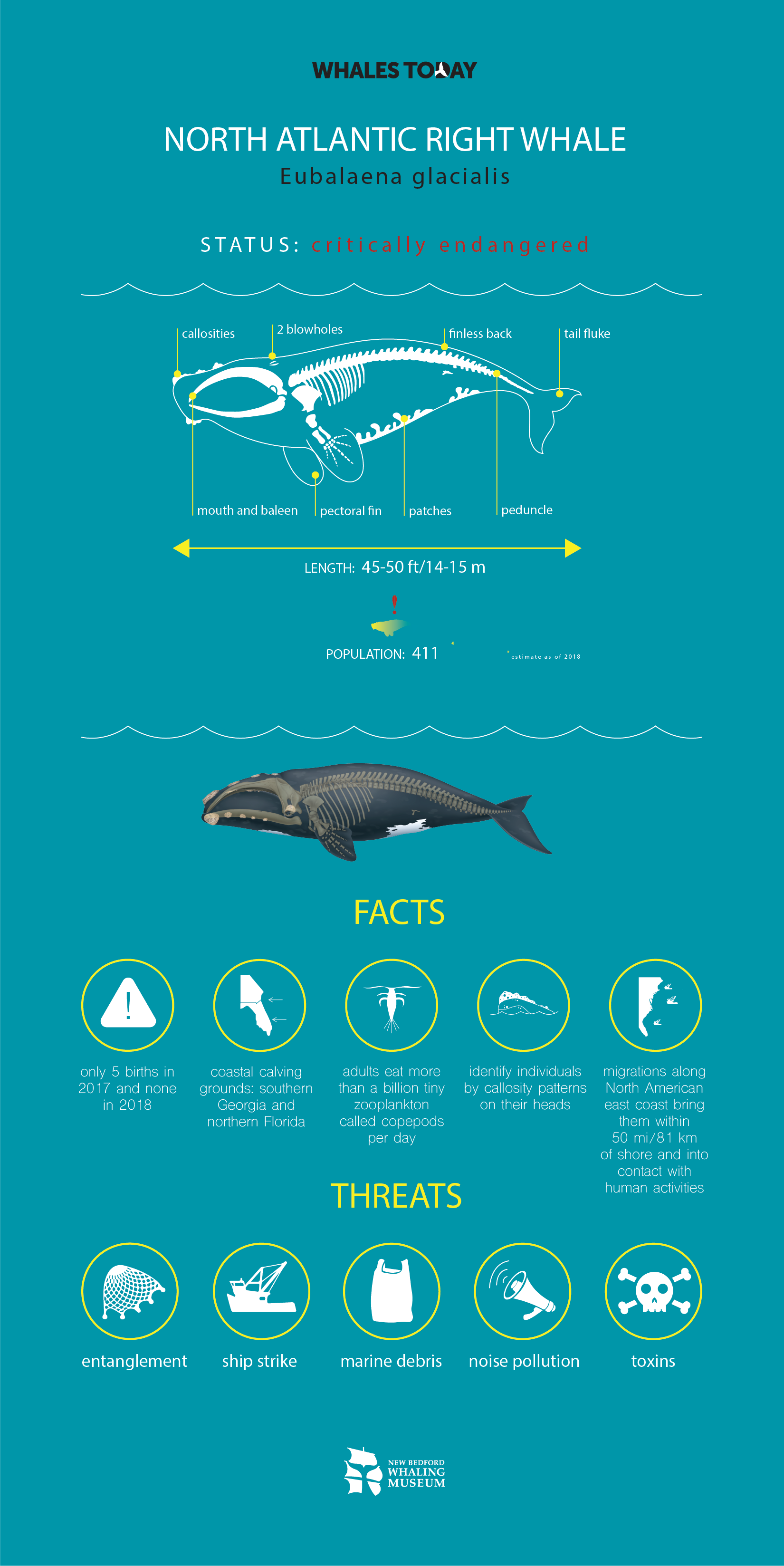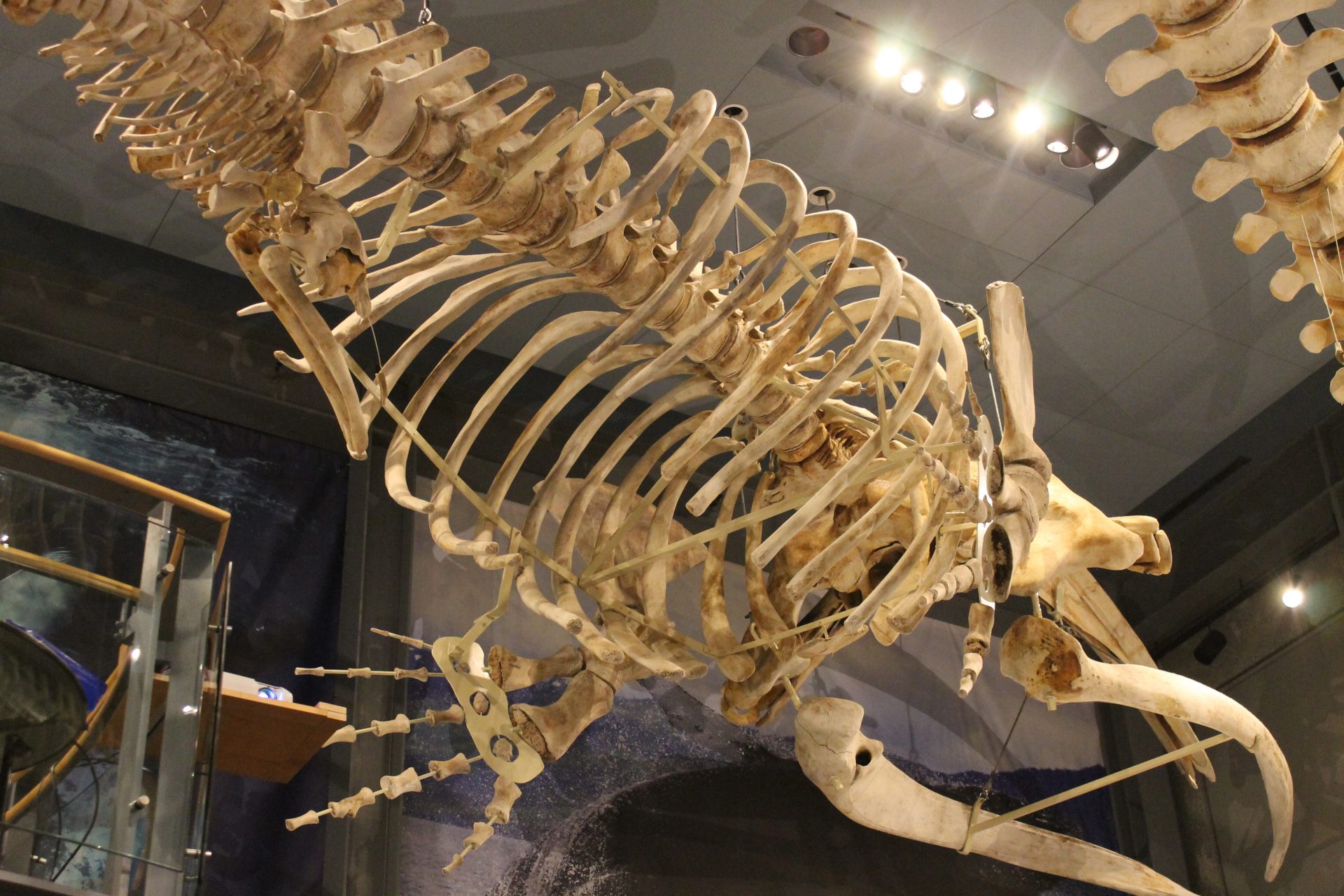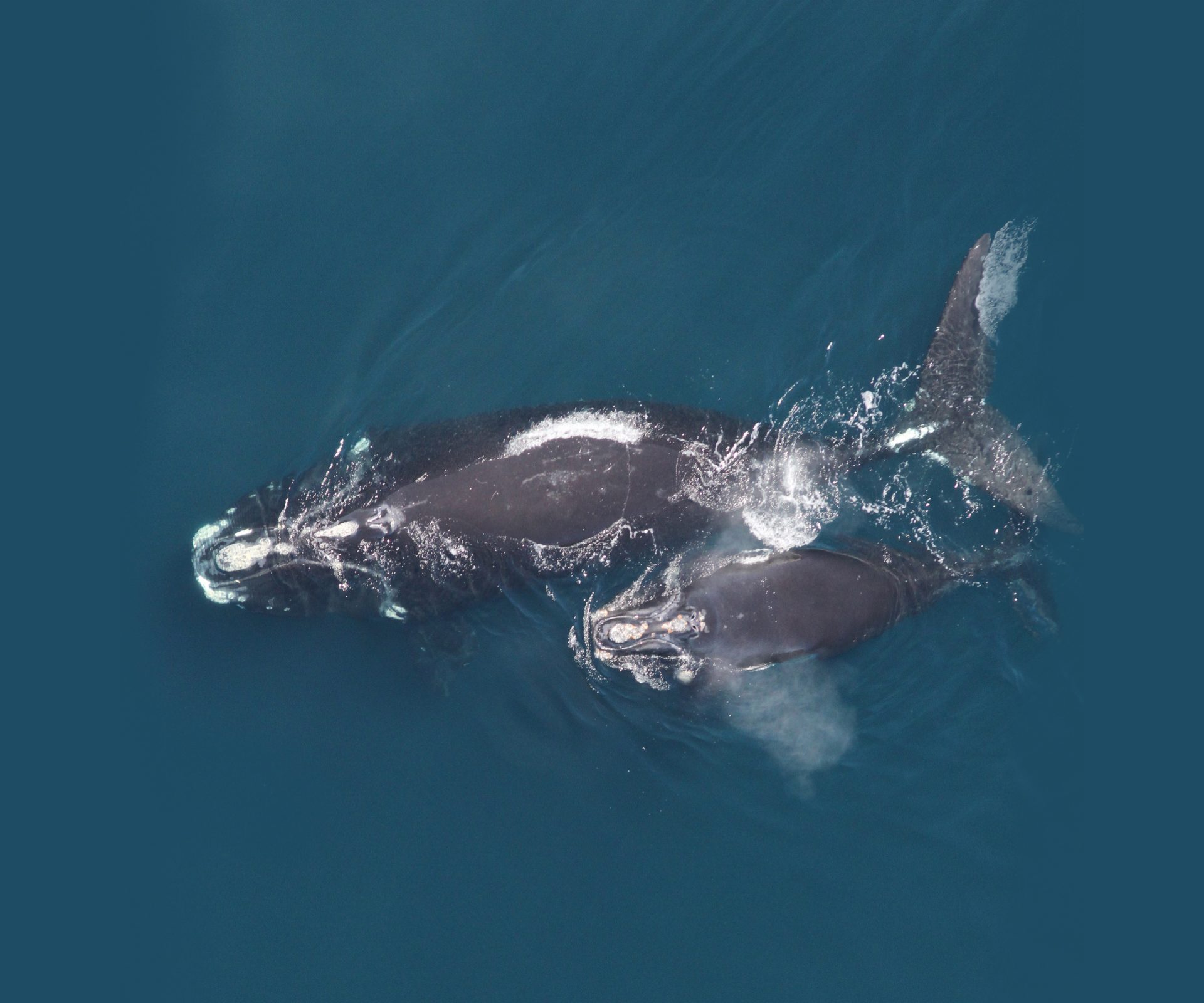Reyna

Who is Reyna?
Reyna is a 49-foot (14.9m) female North Atlantic right whale, who was 15 years old at the time of her death. She was ten months pregnant with her first calf when she was accidentally struck and killed off the coast of Virginia, in Chesapeake Bay. The fetus was also a female. Reyna washed ashore a week later along North Carolina’s Outer Banks. Her name, which is based on the Spanish word for queen, was given to her in 2009 by New Bedford fifth grader Ryleigh Beaulieu.

How She Got Here
Her partially cleaned bones were driven from North Carolina to western Massachusetts in a snowstorm in February 2005. A few months later her bones were moved to the New Bedford landfill where they were composted in a pile of horse and elephant manure. The manure came from New Bedford’s Buttonwood Park Zoo.
Preparation and Display
Once the heat from the compost pile removed the oil from the bones, the bones were power washed and left in the sun to bleach and dry. The skull and vertebrae were assembled in the Museum’s Bourne Building by Andrew and Jean Konnerth. During this process, it was discovered that Reyna had scoliosis. After a delay in the assembly, the crew of Whales and Nails, led by Daniel DenDanto, continued this process.
In November 2008, the skull and vertebrae were brought in through a Jacobs Family Gallery window and hoisted to the gallery ceiling. Whales and Nails attached ribs, sternum, shoulder blades and flippers to the skeleton while working on scissor lifts 25 feet in the air.
The fetal skeleton was raised into place three weeks later. The position and angle of the fetus are a best guess as to how she existed inside of the mother.
Interesting Details
North Atlantic Right Whales are the most endangered of the great whales. There are under 350 individuals. These animals are studied in great detail by a variety of researchers. The DNA records for Reyna indicate that she had two older and five younger siblings; three of whom are believed to still be alive.
All three right whale species have raised patches of skin called callosities. Each whale’s callosity pattern is unique to that whale. These patterns can be used to identify individuals. Small crustaceans called cyamids live on the callosities.


